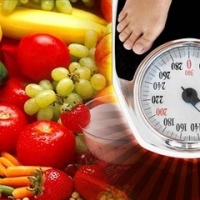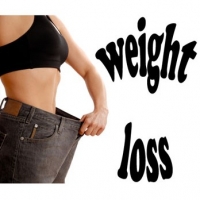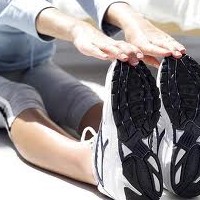1 of 52
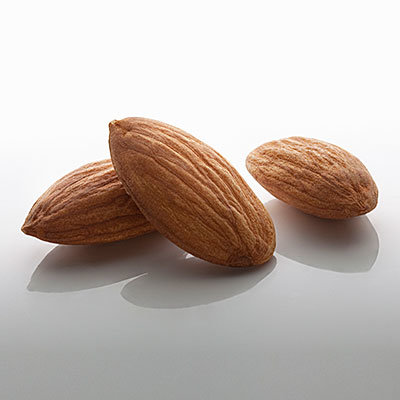
Almonds
Almonds are a great source of mono- and polyunsaturated fats, which can help lower your cholesterol and keep you slim. They also contain fewer calories than most other varieties of nuts (just 163 calories for 23), as well as plenty of fiber and vitamin E. According to a study in the International Journal of Obesity, people who added a daily serving of almonds to a low-calorie diet lost more weight than those who followed the same diet but ate a carb-heavy snack such as crackers instead.
To reap the benefits, Sass recommends using almonds to crust a lean protein such as salmon or sprinkling them onto salads and cooked veggies. "You can also whip them into smoothies or use nut butter as the base for a savory sauce seasoned with garlic and ginger," she says.
2 of 52
3 of 52
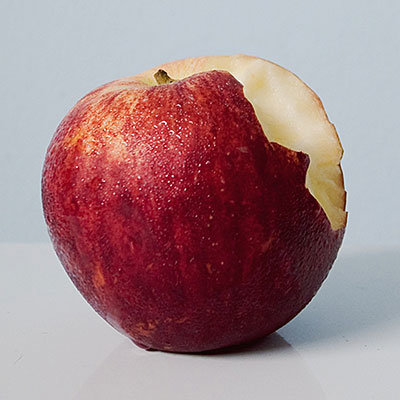
Apples
Apples contain pectin, an ingredient that naturally slows digestion and encourages feelings of fullness. Studies show that eating a whole apple with your meal (as opposed to apple juice or applesauce) is a natural appetite suppressant, helping you consume fewer overall calories without feeling deprived. Sass likes using shredded apple in slaws and stir-fry, or mixing them into burger patties to add moisture.
Apples are also a good source of antioxidants, vitamin C, and fiber. Just be sure not to skip the skin, which contains much of the fruit's nutritional benefits.
3 of 52
4 of 52
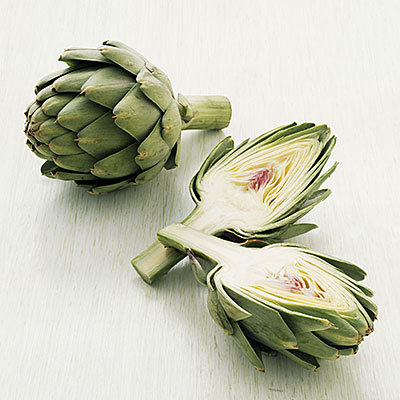
Artichokes
Artichokes are incredibly filling—in fact, they are one of the highest-fiber vegetables, says Sass. A single boiled artichoke contains a whopping 10.3 grams of fiber—almost half the recommended daily amount for women. To curb your appetite before a meal, Sass suggests enjoying the veggie as a pre-dinner appetizer: try them in a refreshing salad with edamame and asparagus, or make homemade salsa with artichoke hearts, tomatoes, olives, and red onions.
4 of 52
5 of 52
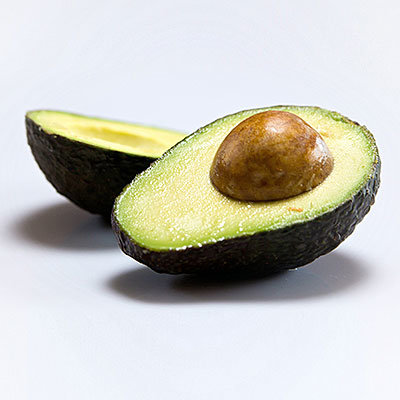
Avocados
Is there anything avocados can't do? This creamy superfood (loaded with monounsaturated fats, potassium, magnesium, folate, and vitamins C and E) has been linked to improved vision, good heart health, and a reduced risk of certain cancers. And avocados can also help whittle your middle: according to one study, people who regularly consume them weigh less and have smaller waists than those who do not. Another study found that women who eat half an avocado at lunchtime might experience reduced food cravings later in the day.
There are countless ways to enjoy the fruit (yes, technically it is one), but you can't beat the classic combination of whole-wheat toast with mashed avocado, lemon juice, and sunflower seeds. Sass also recommends whipping avocado into a smoothie, pureeing it with herbs and citrus juice to make a creamy salad dressing, or adding it to a veggie omelet.
5 of 52
6 of 52
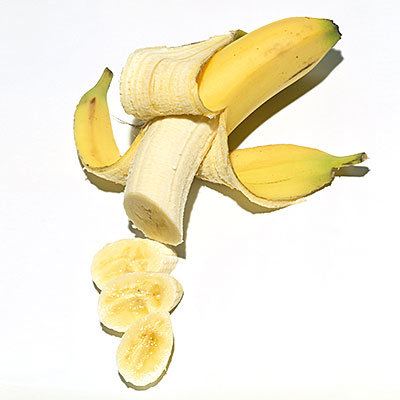
Bananas
Although they're best known for containing potassium, bananas are also a great source of resistant starch, a type of starch that's important for weight loss. Your body digests resistant starch slowly—helping you feel full for longer—while simultaneously encouraging your liver to switch to fat-burning mode. And no need to wait for them to become completely ripe; bananas actually contain more of this calorie-torching ingredient when they're still a little green.
Even more reasons to add a bunch to your shopping cart: Bananas can help regulate blood pressure, ease digestive problems, replenish nutrients after a workout, and may even help prevent strokes in older women.
6 of 52
7 of 52
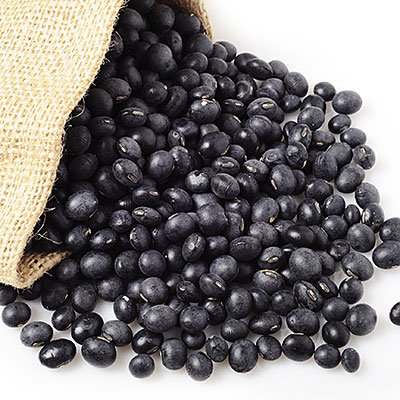
Black beans
Black beans are a member of the pulse family, a food group that's been shown to help burn calories, reduce belly fat, and curb appetite. Just one cup of black beans packs 15 grams of protein without the saturated fat you often find in other high-protein sources, such as red meat.
"Black beans work great in both savory and sweet dishes," says Sass. "You've probably had black bean soup, but you can also make black bean brownies or whip them into puddings and smoothies."
7 of 52
8 of 52
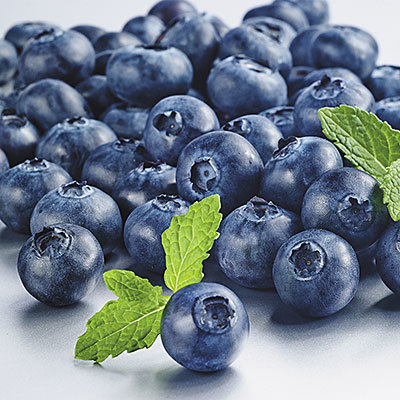
Blueberries
One cup of antioxidant-rich blueberries contains just 80 calories and 4 grams of fiber, which helps your body feel full for longer. They're also a good source of manganese, which can speed up metabolism and make you feel energized.
More reasons to love them: blueberries contain a compound that attacks cancer-causing free radicals, and research suggests they may also help ward off UTIs, keep skin bright, and reduce age-related memory loss.
8 of 52
9 of 52
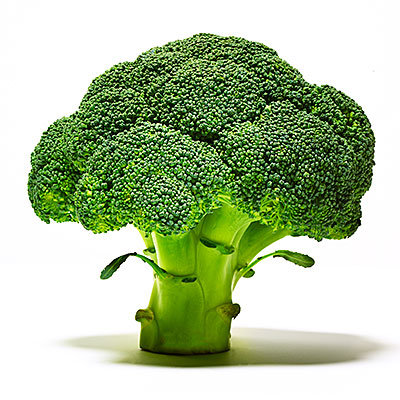
Broccoli
A great source of calcium and important cancer-fighting compounds, broccoli also has loads of filling fiber and will set you back only 30 calories per serving. If eating this cruciferous veggie makes you bloat, try steaming it first, which makes it easier to digest while still preserving the cancer-fighting ingredients that could be lost when you boil or cook it in the microwave.
9 of 52
10 of 52
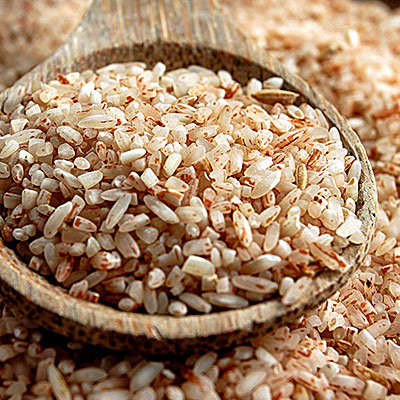
Brown rice
This healthy grain is a great source of phytonutrients, which have been linked to decreased risks of cancer, diabetes, and heart disease. Brown rice is also packed with fiber, contains 1.7 grams of fat-burning resistant starch, and is a low-energy-density food (in other words, it's filling but still low in calories).
Feeling adventurous? Try adding black rice to your shopping cart instead of brown. It contains even more antioxidants than blueberries and significantly more vitamin E than brown rice.
10 of 52
11 of 52
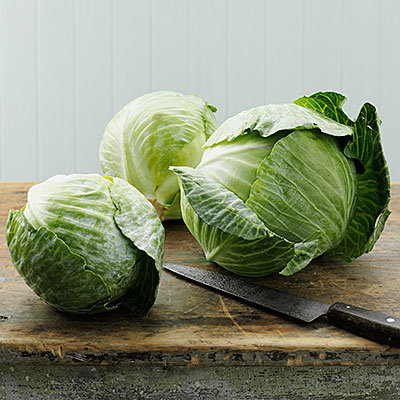
Cabbage
Cabbage is rich in antioxidants and vitamin C but extremely low in calories (just 22 per cup), so you can fill your plate with the leafy green guilt-free. And while you're probably familiar with the infamous Cabbage Soup Diet, there are plenty of alternate ways to eat this veggie that won't leave you feeling hungry. It's delicious in a variety of slaws or salads, and makes a crunchy garnish atop tacos or burgers.
11 of 52
12 of 52
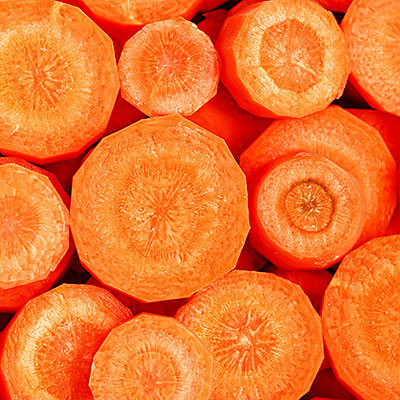
Carrots
Because carrots have high water and fiber content, they can increase feelings of fullness as you eat. To boost their calorie-burning potential, try roasting them: in a University of Arkansas study, roasted carrots contained three times as many antioxidants as raw ones.
Also good: The beta-carotene in carrots can help maintain a strong immune system and good eyesight.
12 of 52
13 of 52
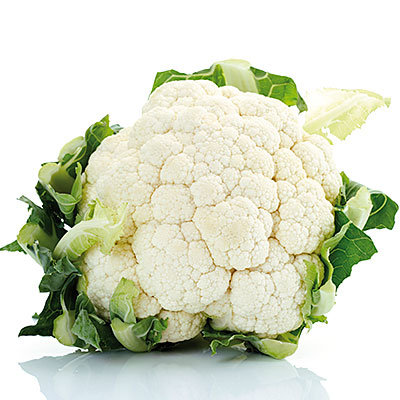
Cauliflower
Cauliflower is an especially low-calorie vegetable—just 25 calories per cup. It's also packed with filling fiber and good-for-you nutrients like potassium and vitamins C, K, and B6.
Like its cruciferous cousin broccoli, raw cauliflower can cause bloating, but steaming can make it easier to digest. Try steaming then blending the veggie to give it a mashed potato-like texture, pureeing it into soup, or making cauliflower 'rice' by pulsing florets in a food processor before heating them in a wok.
13 of 52
14 of 52
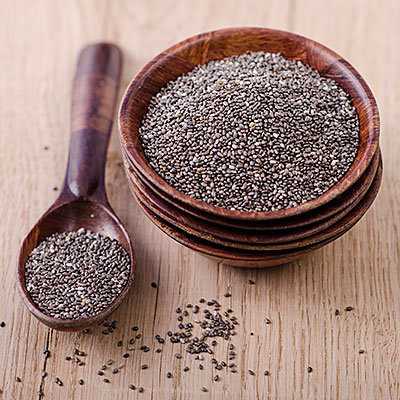
Chia seeds
Small-but-mighty chia seeds are a terrific source of essential nutrients like omega-3s, calcium, potassium, and magnesium. They also pack a serious fiber punch—4 grams per tablespoon—so when you add them to your favorite healthy foods, they'll help ward off hunger.
The versatile seeds can be blended into smoothies, stirred into oatmeal, used to thicken pudding, or added to yogurt. "You can even whisk them into a homemade citrus vinaigrette," says Sass. "The gel-like texture when they absorb water is both filling and satisfying."
14 of 52
15 of 52
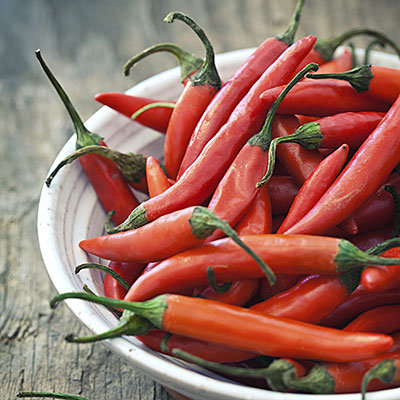
Chili peppers
The effect of chili peppers on your metabolism is real, says Sass. They contain a chemical compound called capsaicin that can increase your body's ability to burn fat (as much as 90 extra calories following a meal), and are also a good source of vitamin C.
"You can add chili peppers to omelets or egg salad, sprinkle them into a stir-fry, or mix them into salad dressing, tahini, or guacamole," says Sass. "You might even stir a little chili pepper into melted dark chocolate to drizzle over fruit."
15 of 52
16 of 52
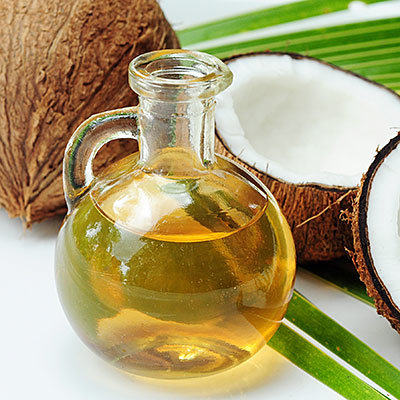
Coconut oil
Coconut oil is having a moment right now: it can be used as a butter or olive oil substitute in everything from baked goods to salad dressing, and can even be used as an alternative to milk in lattes (yes, really). Sass is a fan of the heart-healthy oil whipped into smoothies, and you can also use it to sauté veggies, sear fish, or as an olive oil replacement in soups and stews. (It's also a must-add to your beauty routine, and makes a wonderful natural moisturizer for skin and hair.)
Luckily, trendy coconut oil is also good for your waistline. Because it's a satisfying source of healthy fats, coconut oil fills you up quickly and helps you consume fewer overall calories. It also contains medium-chain triglycerides, which are easily digestible and quickly converted into energy.
16 of 52
17 of 52
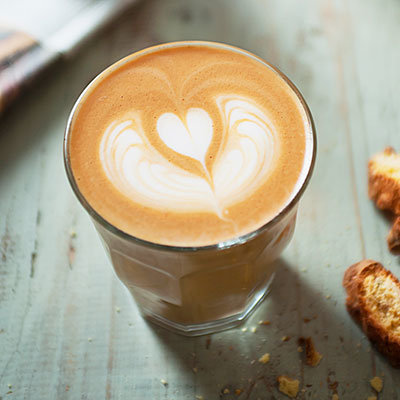
Coffee
Good news for java lovers: The caffeine in coffee could speed up your metabolism and help your body burn slightly more calories (about 26 per cup). A study in Physiology & Behavior found that the average metabolic rate of people who drank caffeinated coffee was 16% higher than those who drank only decaf. Just be mindful of how much cream and sugar you add to your cup, which could offset any health benefits the beverage provides.
"You may be surprised to learn that you can actually eat your coffee, too," says Sass. "Whip coffee grounds into a smoothie, stir them into oatmeal, or use them as a rub for meat."
Not a fan of the taste? Exfoliating your skin with coffee grounds could help temporarily minimize the appearance of cellulite. Because coffee is a diuretic, it draws fluid away from fat cells, causing them to shrink in size.
17 of 52
18 of 52
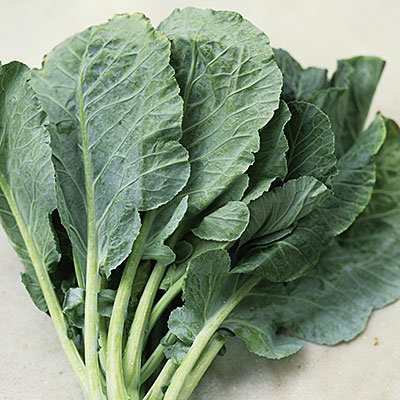
Collard greens
A single serving of the leafy green contains just 46 calories and also provides calcium and your daily-recommended doses of vitamins A and K. Because collard greens are also a great source of fiber (7.6 grams per cup), they can help keep you full for longer.
18 of 52
19 of 52
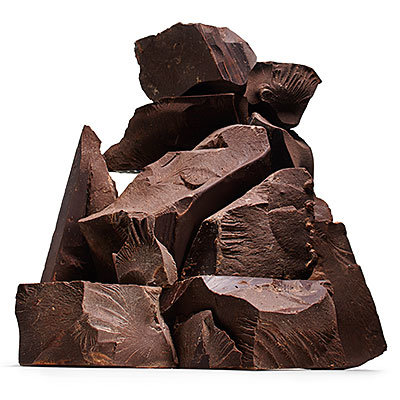
Dark chocolate
"No other food on the planet contains the unique natural substances found in dark chocolate," says Sass. The sweet treat is a good source of monounsaturated fatty acids, which could help speed up your metabolism. Research suggests that dark chocolate might also help curb your cravings for sweet, salty, and fatty foods.
"I love to chop dark chocolate into squares and add them into a smoothie," says Sass. "You can also melt it and season with cinnamon, grated ginger, or fresh mint."
19 of 52
20 of 52
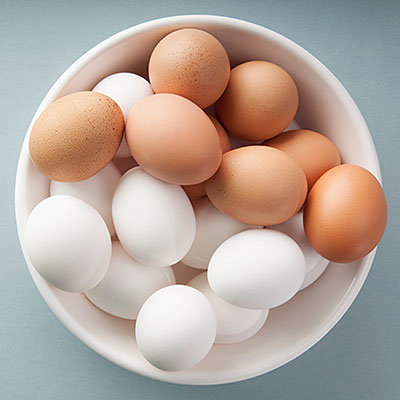
Eggs
You may not think of them as a weight-loss food, but eggs are packed with protein, which helps curb your appetite. One study found that overweight women who ate eggs for breakfast were able to lose twice as much weight as women who started their days with bagels. And egg whites in particular are a good source of branched-chain amino acids, which help keep your metabolism running smoothly.
20 of 52
21 of 52
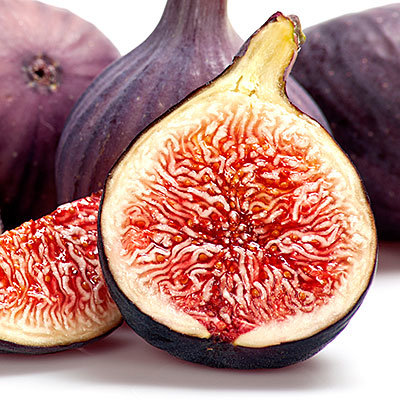
Figs
Craving something sweet? Instead of fattening cookies or cake, reach for fresh figs. Thanks to their dense consistency and high amount of filling fiber, they can slow the release of sugar into your blood. Pair with ricotta cheese, melons, and prosciutto to make a satisfying fruit salad, or use as a topping on whole-wheat pizza with crumbled feta and walnuts.
21 of 52
22 of 52
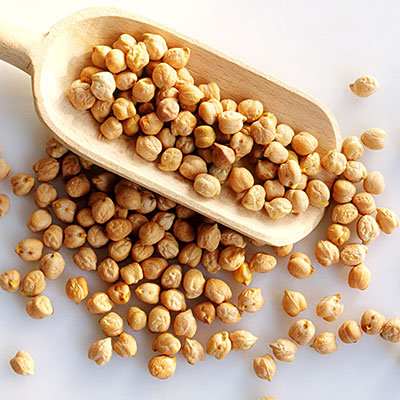
Garbanzo beans
In addition to being a terrific source of filling fiber, protein, and healthy fats, garbanzo beans (also known as chickpeas) contain more than 2 grams of slimming resistant starch per half-cup serving. Toss them in salad, mix into pasta, or use to make a creamy homemade hummus.
The "kabuli" variety of garbanzo beans is most commonly found in the U.S., but keep your eye out for the "desi" type, which actually contains more fiber and antioxidants.
22 of 52
23 of 52
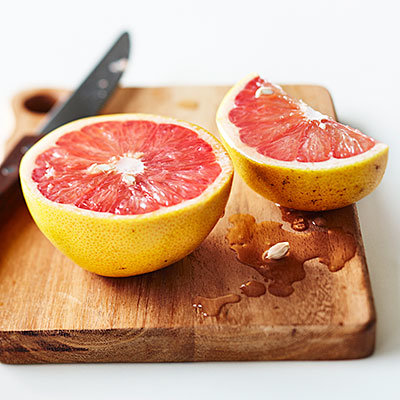
Grapefruit
A fat-burning superfood, grapefruit contains a compound that can lower the fat-storage hormone insulin, which in turn can lead to weight loss. In fact, eating half a grapefruit before each meal could help you lose up to a pound a week—even if you don't change anything else about your diet. Because grapefruits are 90% water, which fills you up, they also act as a natural appetite suppressant.
Bonus: Research suggests that this superfruit can also help protect your heart and maintain firm, healthy skin.
23 of 52
24 of 52
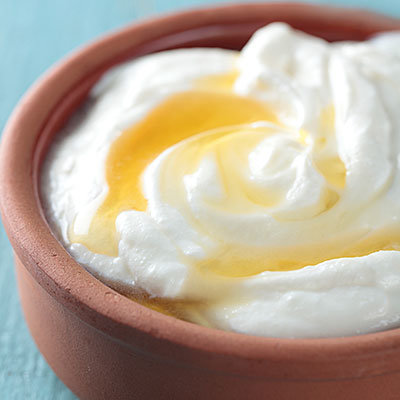
Greek yogurt
Greek yogurt is an extremely satiating breakfast or snack, thanks to its thick, creamy texture and a whopping 17 grams of protein (nearly three times more than is in an egg, in fact). A study from the journal Appetite found that people who ate a high-protein yogurt snack three hours after lunch felt fuller and ate dinner later than the other participants. And on top of that, other studies suggest that the acids produced during yogurt fermentation might help increase feelings of fullness.
24 of 52
25 of 52
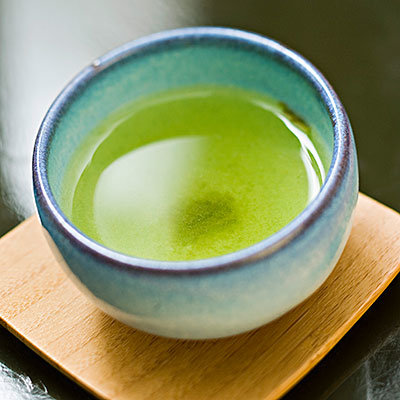
Green tea
If you want to sip your way to a faster metabolism, pour yourself a cup of green tea. The beverage is filled with powerful antioxidants that can help fight inflammation, burn fat, and increase energy. According to one study, drinking five cups a day could help you lose twice as much weight, mainly in your midsection. And drinking green tea could also reduce risk of Parkinson's disease, as well as ovarian, colorectal, skin, and prostate cancers.
For an extra boost, squeeze a slice of lemon or orange into your tea before drinking it: research from Purdue University found that citrus juice gives green tea's antioxidants staying power, so they're digested slowly and benefit your body for longer.
25 of 52
26 of 52
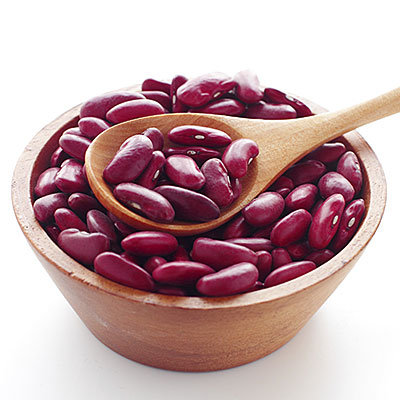
Kidney beans
Like chickpeas, kidney beans (also known as red beans) are a rich source of slimming resistant starch and contain more than 5 grams of satisfying fiber per serving. Because they're packed with omega-3s and calcium, the legume is also good for your heart.
Enjoy them in a big bowl of chili, or make a bean salad with onions, peppers, and black and garbanzo beans.
26 of 52
27 of 52
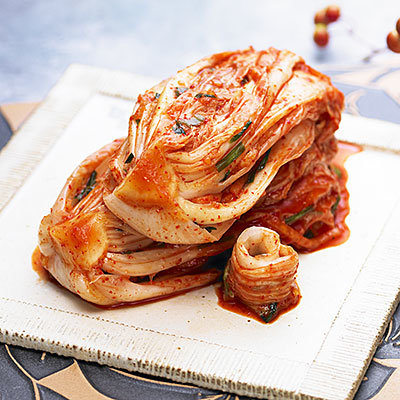
Kimchi
Kimchi is a spicy Korean condiment that's made with fermented cabbage and is a great source of vitamins A, B, and C. Because it's fermented (like sauerkraut), kimchi contains tons of those good probiotics that aid the body in digestion. A recent study in the Proceedings of the National Academy of Science found that maintaining healthy bacteria in your gut can improve gut lining, which in turn could help reduce fat mass and inflammation.
Look for kimchi in the refrigerated section at your grocery store and use it to flavor Korean-inspired dishes like dumplings or spicy beef stew.
27 of 52
28 of 52
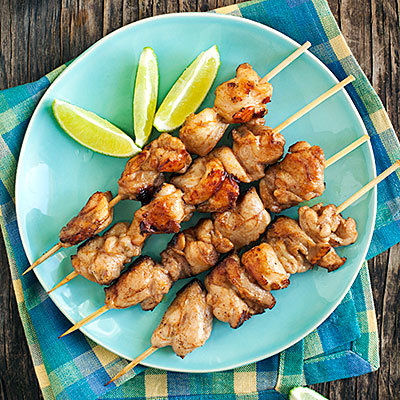
Lean proteins
If you're trying to lose weight, skimping on protein could make it more difficult for you to reach your goals. According to a 2012 study, eating too little protein could cause you to have too much body fat, while another 2014 study found that eating small amounts of protein throughout the day might improve muscle strength.
To feel full without adding a lot of saturated fat, opt for lean proteins like chicken, turkey, pork loin, or 97% lean ground beef.
28 of 52
29 of 52
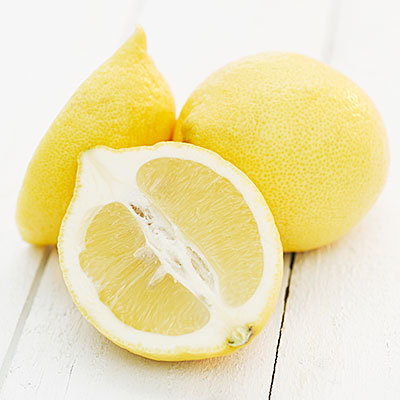
Lemons
A squeeze of lemon adds instant freshness to everything from drinks to salads to fish without additional calories, making it an ideal way to flavor food if you're watching your weight. Plus, the pectin fiber in lemons can help fill you up and fight off hunger cravings. And while it hasn't been scientifically proven, some experts believe that the citrus fruit can aid in weight loss, as well.
"Add a slice of lemon to a glass of water, hot or iced tea, or homemade vinaigrette," says Sass. "Or steam veggies in lemon water to give them flavor."
29 of 52
30 of 52
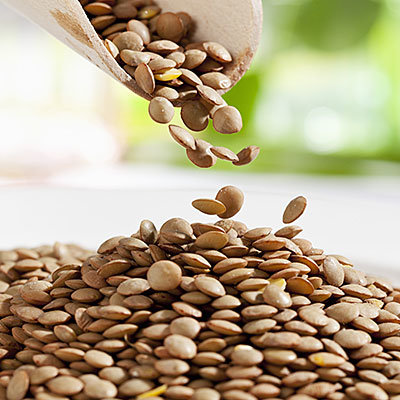
Lentils
There's a reason (well actually, many reasons) why lentils are considered one of the world's healthiest foods. With 13 grams of protein and 11 grams of fiber per serving, this legume—another member of the pulse family—will keep you feeling full for hours in between meals. They're a great source of fat-burning resistant starch, too, with 3.4 grams in a half-cup serving.
Lentils also boast twice as much iron as other legumes and are especially good sources of vitamin B and folate. One variety, called Beluga black lentils, even contain a pigment that acts like an antioxidant, helping to fight heart disease, cancer, and signs of aging.
30 of 52
31 of 52
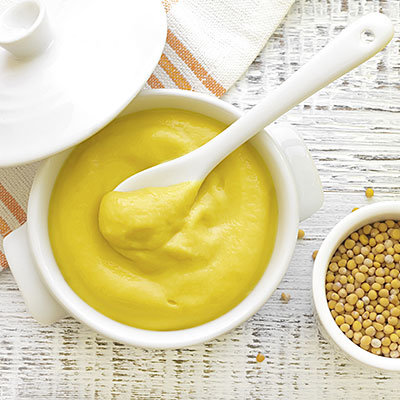
Mustard
Next time you're in line at the deli, Sass recommends opting for mustard on your sandwich instead of mayo or dressing. Mustard is extremely low in calories (there are a mere 3 in a small packet) as well as saturated fat.
31 of 52
32 of 52
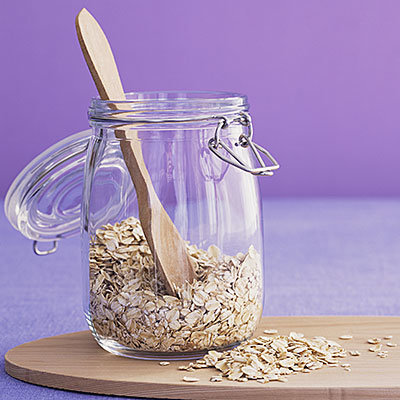
Oatmeal
Oats are another terrific source of metabolism-boosting resistant starch, with 4.6 grams in a half-cup serving. And they're particularly good for your waistline when cooked: in a recent Nutrition Journal study, participants who ate 220 calories of hot oatmeal for breakfast reported less hunger later in the day than those who ate cold oat cereal.
32 of 52
33 of 52
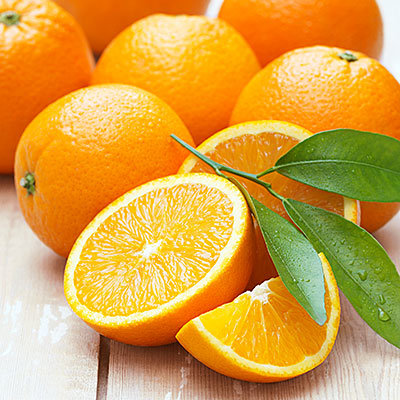
Oranges
Like lemons, oranges are low in calories but contain plenty of fiber, helping you to feel full throughout the day and consume less overall. In fact, in a list of the most filling foods compiled by Australian researchers, oranges ranked the highest among fruits.
From January to April, keep your eyes peeled for blood oranges, a darker-hued winter variety of the citrus that contains a full day's worth of vitamin C as well as high levels of the disease-fighting antioxidant anthocyanin.
33 of 52
34 of 52
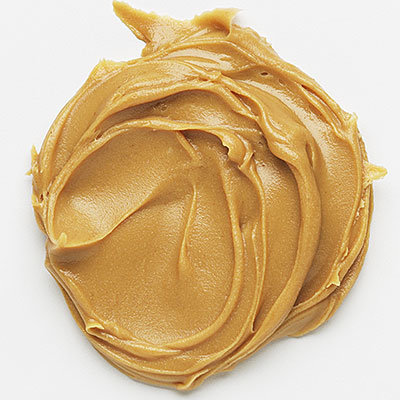
Peanut butter
Your favorite childhood snack is good for your grown-up self, too. Because peanut butter is a great source of protein and healthy fats, it can curb hunger and keep you feeling full long after you're finished eating. Having small snacks during the day that include a lean protein such as peanut butter with complex carbs (like an apple or banana) can also help keep your metabolism running smoothly.
Another reason to indulge: Research suggests that eating peanut butter as part of a healthy diet could benefit your heart and maybe even lengthen your life. Just be sure to carefully read the nutrition labels on the jar and choose a brand that doesn't have any added sugar and contains only peanuts and salt.
34 of 52
35 of 52
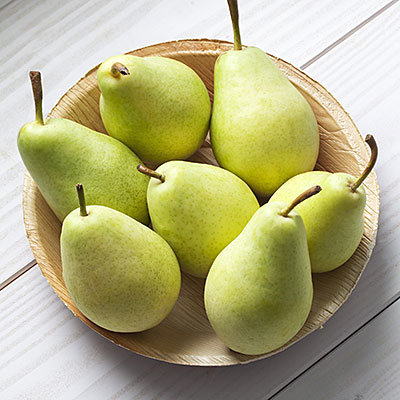
Pears
Like apples, pears are a great source of antioxidants and fiber (just one contains 15% of your daily recommended amount). According to one study, women who ate three pears a day consumed fewer overall calories and lost more weight than those who did not.
35 of 52
36 of 52
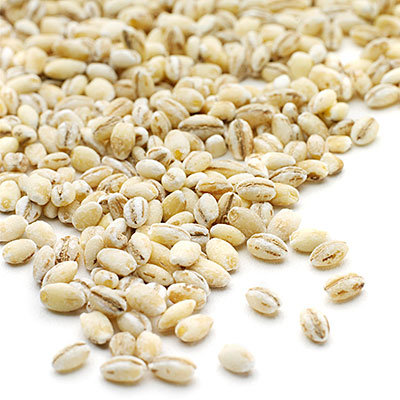
Pearl barley
Pearl barley is a type of barley that has been polished to remove the hull and outer bran layer, which helps it cook more quickly. Another great source of fiber and slimming resistant starch (nearly 2 grams per half-cup serving), pearl barley helps increase feelings of satiety.
Because it's such a hearty starch, pearl barley is delicious in stews and soups.
36 of 52
37 of 52
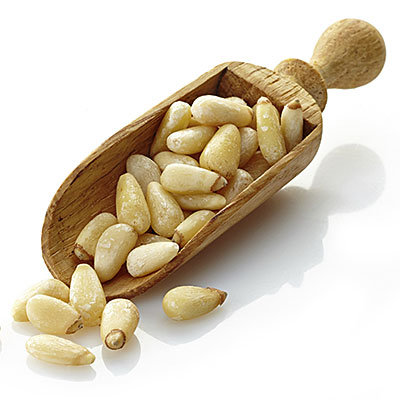
Pine nuts
Compared to other nut varieties, pine nuts tend to be on the pricier side, but adding them to your shopping cart could be a good investment for your health. Research suggests that the fatty acids in these little nuts could increase satiety hormones, helping you feel full. They're also packed with vitamin B1 and manganese, a mineral that helps your body metabolize carbohydrates and protein.
Sprinkle them on salad, sauté with Brussels sprouts, or use them as an unexpected pizza topping (we love the combination of pine nuts with Brie cheese and sage).
37 of 52
38 of 52
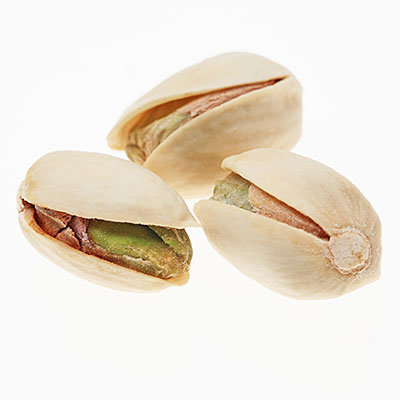
Pistachios
Pistachios may be small, but these green-hued nuts contain as much potassium as a banana and are packed with lutein, an antioxidant that benefits your eyes and skin. They also have fewer calories than any other nut variety.
For greater slimming potential, purchase them unshelled: the process of removing the shells will force you to eat more slowly, giving your brain additional time to determine whether or not you're still hungry.
38 of 52
39 of 52
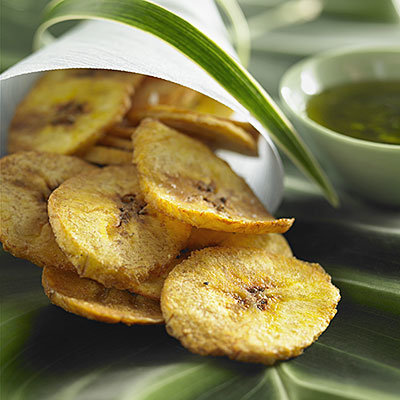
Plantains
Plantains are a slightly bigger, starchier, and less sweet member of the banana family. Like their cousin, plantains are a great source of resistant starch, containing nearly 3 grams in a half-cup when cooked.
Haven't prepared plantains before? It couldn't be easier: Sauté them in olive oil until they're slightly crispy to make plantain ‘chips' or bake with seasonings like lime juice and honey.
39 of 52
40 of 52
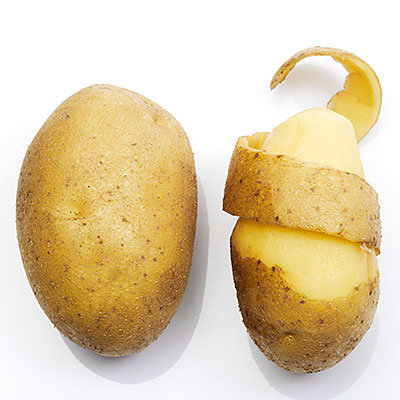
Potatoes
Because they're so carb-heavy, potatoes aren't often considered a health food—but you shouldn't pass on spuds. Potatoes are a great source of resistant starch, so eating them in moderation can help your body burn fat. They'll also keep you full: on the European Journal of Clinical Nutrition's satiety index, potatoes ranked number one.
40 of 52
41 of 52
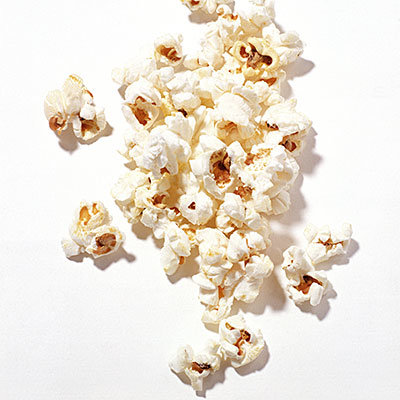
Popcorn
With the notable exception of movie popcorn—which can contain upwards of 1,000 calories, thanks to all the butter drizzled on top—popcorn is a healthy, filling snack that's loaded with fiber and protein.
"In addition to all of the benefits of being a member of the whole grain family, popcorn is light and airy, so you can eat a large portion," says Sass. "About three cups of popped popcorn—the size of three tennis balls—has the same amount of calories as one small handful of chips or crackers."
41 of 52
42 of 52
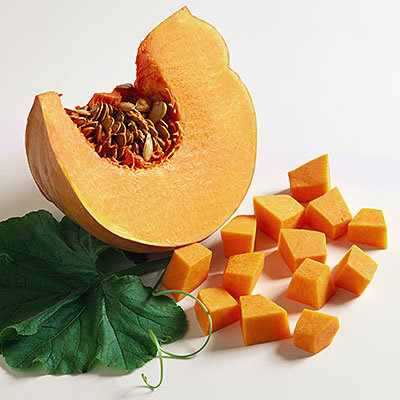
Pumpkin
Pumpkin is packed with filling fiber (containing more than 20% of the daily recommended amount per serving) as well as potassium, vitamin B, and beta-carotene. And it's low in calories but naturally sweet, making it the perfect ingredient for guilt-free baked goods.
As an added bonus, pumpkin is great for your skin. It contains carotenoids, a plant pigment that fights wrinkles and helps protect skin from signs of aging. The zinc found in pumpkin seeds also has anti-inflammatory and antibacterial properties, which could help soothe sensitive or acne-prone skin.
42 of 52
43 of 52
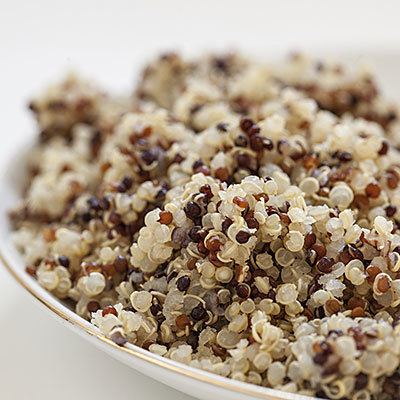
Quinoa
Quinoa contains a hearty dose of the minerals iron and magnesium, which help give your body energy. And a one-cup serving of the grain boasts 8 grams of protein and 5 grams of fiber, increasing feelings of fullness. It's also gluten-free, making it a safe choice for people with celiac disease.
Confused at how to actually cook quinoa? The pseudograin (it's technically a seed!) is easy to prepare and extremely versatile—it's delicious on its own or in a salad, can be used to make burger patties or pancakes, or could even be baked into cookies and muffins.
43 of 52
44 of 52
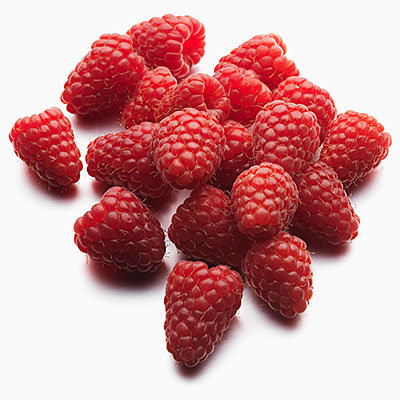
Raspberries
Add a handful of these bright berries to your cereal or salad whenever you can: just half a cup delivers 4 grams of fiber, as well as 25% of your daily recommended amounts of vitamin C and manganese. Raspberries are also a great source of powerful antioxidants and are high in polyphenols, which can help reduce your risk of heart disease.
44 of 52
45 of 52
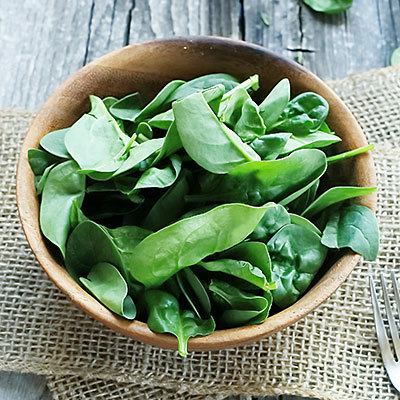
Red wine
Good news, wine drinkers. Thanks to resveratrol, an antioxidant found in grape skin, drinking red wine in moderation can be part of a healthy diet. Some studies suggest that people who drink wine have smaller waists and less abdominal fat than those who drink mainly liquor. And having one glass of red wine can increase your body's calorie burn for up to 90 minutes afterwards. The antioxidants in wine might even help your body prevent cancer and improve heart health. Just be sure to stick to no more than a glass a day—the calories can add up fast.
45 of 52
46 of 52
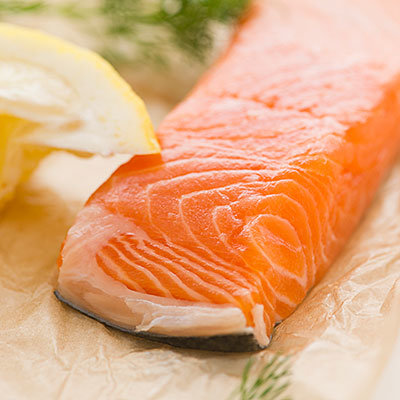
Salmon
Salmon is filled with monounsaturated and polyunsaturated fatty acids, which could help speed up weight loss: a 2001 study found that participants who ate more MUFAs lost an average of 9 pounds, while those who ate a primarily low-fat diet gained an average of 6 pounds.
Selecting protein sources that are rich in PUFAs (like salmon) instead of those that contain lots of saturated fat (such as red meat) could also help reduce visceral fat in your belly, according to a Swedish study.
46 of 52
47 of 52
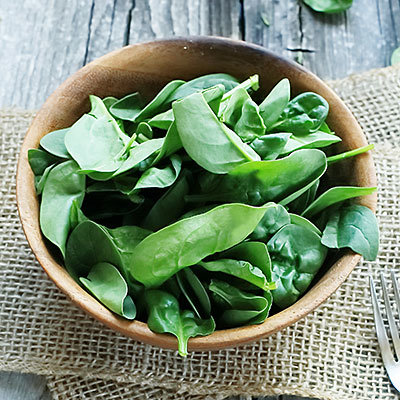
Spinach
This dark, leafy green has a long list of benefits: it's a rich source of iron, folic acid, vitamin K, vitamin C, lutein, and powerful antioxidants that can help fight diseases like ovarian and breast cancer. Spinach is also loaded with magnesium, which can lower blood sugar and insulin levels (aiding your body in weight loss as a result), according to a 2013 study.
Make spinach the base of a nutrient-packed salad, use it to top pizza, mix into pasta, or sauté on its own with garlic and olive oil.
47 of 52
48 of 52
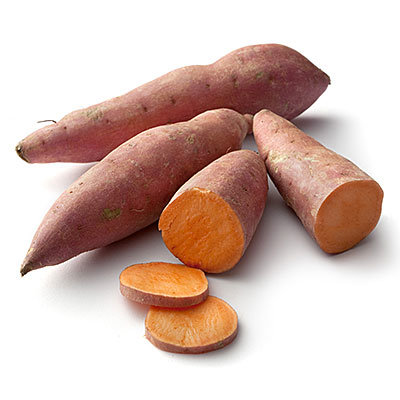
Sweet potatoes
Like potatoes, sweet potatoes are a great source of slimming resistant starch, which triggers feelings of satiety. But they also boast nutritional benefits all of their own: just one baked sweet potato contains 438% of your daily vitamin A (versus 1% in a white potato), 37% of your daily vitamin C, as well as calcium, potassium, and iron.
They're also low-calorie (about 105 in a medium sweet potato) and contain 4 grams of filling dietary fiber, 16% of the daily recommended amount.
48 of 52
49 of 52
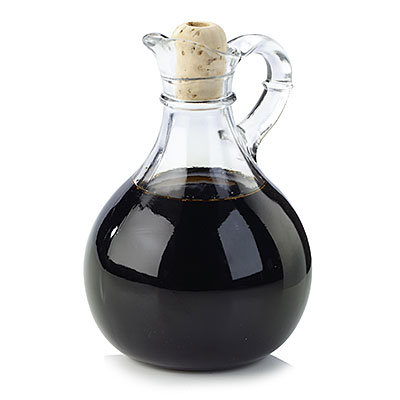
Vinegar
In addition to being low in calories, vinegar might also help prevent weight gain. A 2009 Japanese study found that the acetic acid in vinegar could increase feelings of satiety and prevent the accumulation of body fat.
"Vinegar is not only for salad dressing," says Sass. "Experiment with using it in slaws or chilled vegetable side dishes."
49 of 52
50 of 52
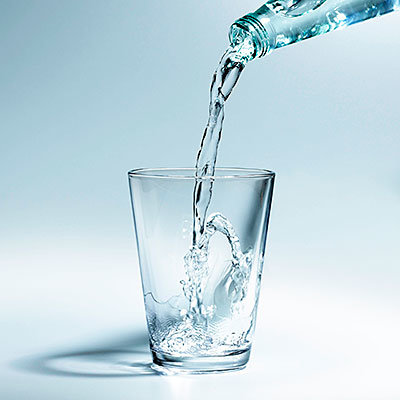
Water
Add this to your list of reasons to drink plenty of H2O: Because the symptoms of hunger are similar to those of dehydration, it's possible for your body to mistake thirst for hunger, tricking you into eating more than you need to.
Drinking enough water can help you stay slim, too. Research from the American Chemical Society in Boston found that having two 8-ounce glasses of water before a meal while also reducing portion sizes could help you lose weight and keep it off. Not to mention, water fills you up, curbing your appetite: "In addition to slightly boosting your metabolism, drinking water before meals has been shown to help you eat less without trying," says Sass.
50 of 52
51 of 52
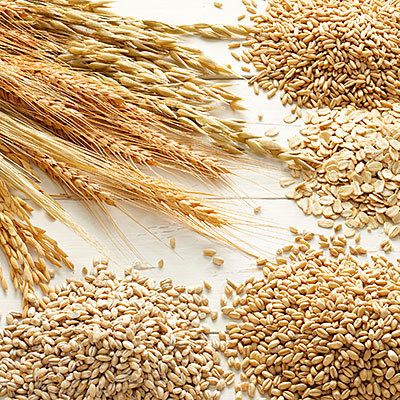
Whole grains
Going gluten-free may be a popular trend, but unless you're actually gluten-intolerant or have celiac disease, plenty of reasons exist to continue eating whole grains. They're a tasty way to fill up on both soluble and insoluble fiber, which help you feel full for longer and keep bowel movements regular (oats, barley, and bulgur are especially high sources). Whole grains can also help prevent weight gain: in one study, women who ate whole grains like wheat germ and dark bread had a 49% lower risk of "major" weight gain over time.
Whole grains also boast a slew of other enviable health benefits: 2015 research found that older people who eat whole grains could have longer lives. And another study found that women who consumed two to three servings of whole grains everyday were 30% less likely to suffer from a heart attack.
51 of 52

